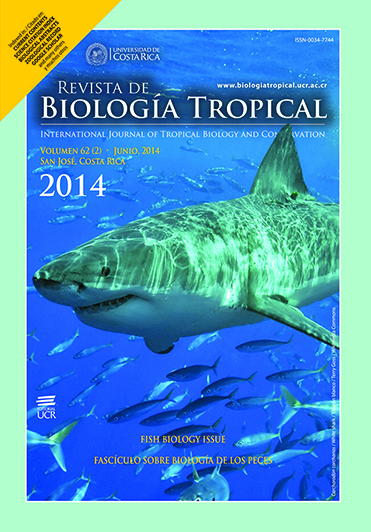Abstract
The Common Snook, Centropomus undecimalis, inhabits riverine and marine areas of Southern Gulf of Mexico, where it is subject to intense use and exploitation. It has been reported that the genetic identification of fish stocks constitutes a valuable tool for wild population management; nevertheless, there is no available information on the genetic identification on fish stocks of this species in the region. The aim of this study was to determine the genetic relationship between C. undecimalis captured in marine and freshwater environments of the Gulf of Mexico and the San Pedro River. For this, muscle tissue samples of 79 specimens were obtained from areas located more than 300km apart. The genotype of each individual was determined using seven microsatellite primer pairs. Five primers amplified efficiently presenting between six and 28 alleles per locus. High levels of heterozygosis were observed in samples from both environments. Deviation from HWE due to an excess of heterozygotes was observed. The values of genetic difference indicate an absence of population structure (FST=0.0075 and RST=0.016, p=0.051) and similarity in the allele frequencies, defined by Nei’s index (0.805). Data showed the existence of a high gene flow due to the number of migrants (Nm=18.7). Our results suggest that individuals living in these environments belong to the same genetic population. We suggest the development of management and protection plans for this fish species population in the wild.
##plugins.facebook.comentarios##

This work is licensed under a Creative Commons Attribution 4.0 International License.
Copyright (c) 2014 Revista de Biología Tropical






